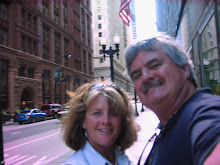>
> On Wednesday, September 21, 2005, 26 members of the Museum Volunteers of the
> Philippines enjoyed a very informative day touring LA FLOR DE LA ISABELA,
> ("The Flower of Isabela") manufacturer of fine cigars since 1881. This is
> one of only three manufacturers of hand rolled cigars in the Philippines.
>
> We boarded a bus in Makati City and traveled south on the South Superhighway
> for about 30 minutes to Paranaque. Upon our arrival we were met by a
> friendly group of staff members. Just as we were about to begin our tour,
> the electricity went out and we were left in the dark. That did not keep us
> from "seeing" what we had come to see, so we began our journey through the
> impressive factory.
>
> The tobacco is kept at a constant temperature and fermented for 4-5 years
> before being used in cigars. The fermenting process requires the leaves to
> be rotated by hand in order to eliminate excess nicotine, ammonia and sugar.
>
> The first group of cheerful women, working by candlelight, were evaluating
> and sorting the leaves according to their size, color, texture, weight, and
> thickness. These leaves would eventually become the final layer on the
> cigars which is called the "wrapper." During this process the workers
> removed the center stem from the leaves. The "wrapper" leaves are then
> bundled together in groups of 26 and kept at a constant 18 degrees Celsius.
>
> After about 30 minutes we were excited when the electricity came back on and
> we were able to see the rest of the operations. The largest section of the
> factory is the area where the cigars are rolled. There seemed to be about 60
> people working away rolling cigars. There are many different varieties of
> cigars. Each roller was assigned to make a certain type of cigar and
> required to meet a minimum quota per day. They are paid extra when they
> produce beyond their quota. This incentive program has worked well
> providing positive reinforcement for dedicated employees committed to
> producing a quality product.
>
> Following the rolling area we watched the quality control workers carefully
> examining each cigar individually for perfection of size and shape. The
> cigars are then sorted by color to ensure that like colors are boxed
> together. The finishing steps include banding, wrapping in cellophane, and
> finally boxing and sealing the cigars for shipment.
>
> At the conclusion of our tour we were able to place our personal orders and
> carry our cigars home with us
skip to main |
skip to sidebar

Guestbook
WorldTimeServer Clock
Gainesville,Florida |
Newest Obsession! This is so much fun! Please join!
Our Favorite Blog Entries
Interesting Blogs and Pictures
- Betsy's Facebook
- Chloe in Belgium, Summer in France Rotary Youth Exchange
- Baghdad updates-1Lt. Will Sullivan
- Maggie's pictures
- Kristine's Pictures
- Sean's Pictures
- Melinda Bradshaw Photo Graphics
- Marshall's in Manila
- McLaughlin Dynasty
- Rainsquest
- Julie and Kai- Some day never comes
- Amy Barry-Capturing Real Life
Blog Archive
-
▼
2005
(23)
-
▼
September
(6)
- We are off for a weekend excursion to a nearby (2 ...
- Today in my History class we had a very interestin...
- We attended our first live performance on Sunday a...
- Hello Friends and Family!I have decided to try to ...
- > > On Wednesday, September 21, 2005, 26 members o...
- Hoy Friends!We are well into our 2nd month now an...
-
▼
September
(6)
Amazing Statistics-Changing by the second!
About Us

- Betsy and Terry
- Keystone Heights, Florida, United States
- Favorite Quotes: "Travel is fatal to prejudice, bigotry, and narrow-mindedness." Mark Twain "Money is like cow manure, when you pile it up and keep it in one place it starts to stink, but when you spread it around, it makes things grow beautifully" Al Watson

No comments:
Post a Comment